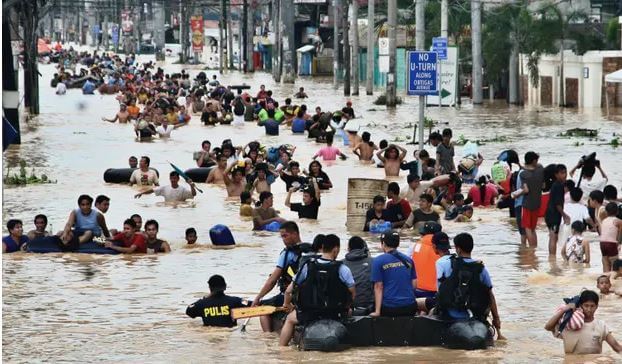Library: WTW – New satellite data reveals increasing proportion of population exposed to floods worldwide
August 2021 featured report:
The impact of climate change is all around us. Wildfires have been raging in parts of the US, Europe, and Australasia over the past year.
Flooding remains a perennial threat, even Europe has suffered catastrophic flooding in recent weeks and this is only set to worsen.
This month, instead of featuring a report, TDI is showcasing a database that offers insurers greater insight into the impact of flooding across the world.
Flood risks on the increase
The database is the result of work by Willis Tower Watson and its partner, Cloud to Street. The database uses satellite observations of flooding and combines this data with artificial intelligence and other analytical methods to predict flooding, rather than using the models that are typically used within the insurance industry. This body of work has been published as The Global Flood Database. It offers a comprehensive view of flood exposure around the world.
The research has revealed that the global population that is now exposed to floods grew by 24% in the years since 2000. To put that into context, that is 10 times more than scientists believed to be the actual figure. This demonstrates that flood risk is increasing, with more flood events anticipated in the future.
Flooding hits the poorest hardest
There are low levels of penetration for flood insurance and 90% of economic losses from natural disasters remain uninsured. Those hardest hit will be the poorest, because economically, they are the most vulnerable.
The existing models used by the insurance industry are obsolete and simply not fit for purpose, says WTW and Cloud to Street. They have severe limitations and fail to identify risks, particularly where there is no historic data. It is hoped that access to the database may help the industry close the coverage gap for flood insurance.
“More people and more assets are impacted by flooding than any other climate fuelled disaster,” says Cloud to Street’s CEO and co founder Bessie Schwarz.
“The global flood database will help insurers, understand the changing nature of flood risk and offer more competitive insurance coverage. We are proud to enable governments and insurers to protect millions of people and billions in assets they have never been able to before.”
More countries to be affected
The data was drawn from analysis of daily satellite images used to estimate the extent of flooding and the populations exposed to it during 900 large flood events between 2000 and 2018.
It showed that almost 300 million people were directly affected and up to 2015 that number had increased somewhere between 60 million and 86 million.
The research estimates that 25 new countries will be added to the list of 32 that are already experiencing an increase in flooding.
Ongoing urbanisation of both developed and developing economies, means that people are flocking to economic centres, and the poorest have no choice but to live in areas that are going to be subject to flooding.
As a result, though dam breaks represent fewer than 2% of flood events, they expose the highest numbers of people, due to population density.
South and Southeast Asia experience almost 90% of all flood events, due to the presence of vast river basins.They are also highly populated, with rapidly expanding populations. While these will continue to be hot spots for flood events, the data from the satellite imagery has identified new areas that are experiencing increases in flooding. Southern Asia is one of these regions, but parts of southern Latin America and the Middle East were also identified from the research.
Asia and Africa face the biggest risks
North America and Europe have experienced stable or reduced flood risk, even if the experience of recent months in Europe would seem to contradict this finding.
However, it is Africa – particularly sub-Saharan – that has experienced the highest increase the proportion of its populations be exposed to flood risk.
In addition to assisting insurers providing cover for more meaningful cover for customers. A better understanding of flood patterns, and how they are changing, will assist and reinsurers in developing comparisons of models, new views of risk and testing their structures for reinsurance data can also feed into government research into disaster resilience, and help them to prepare for and mitigate, where possible, large scale flooding within their nations.
For more, see the full report.
Link to Full Article:: click here
Link to Source:: click here



























































